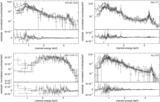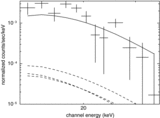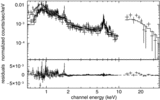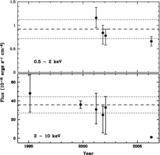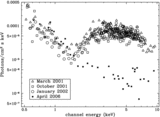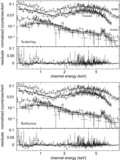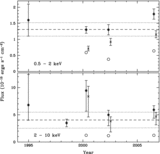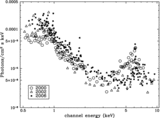Image Details
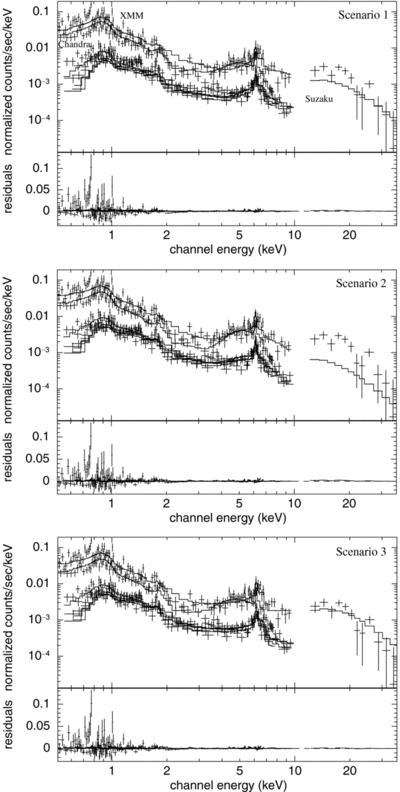
Caption: Figure 10.
Three models to the Chandra-ACIS, XMM-Newton-EPIC pn, and Suzaku-XIS/PIN data used to explain the changes in the 2–10 keV spectral shape of Mrk 273: scenario 1 (top) tests only a change in the absorbing column, scenario 2 (middle) tests only a change in the intrinsic luminosity of the AGN, and scenario 3 (bottom) tests the change in the covering fraction of the absorber (see Section 5.2 for details). The response from each detector is folded in with the data. The horizontal axis is energy in the observer's frame. The cross-normalization factor is assumed to be unity for XMM-Newton and Chandra with respect to Suzaku-XIS0. While all three models have similar reduced χ 2 values (1.76, 1.53, and 1.39 respectively), the third model provides the best-fit to the overall 0.5–40 keV spectrum. Thus, we favor the third scenario (change in the covering fraction of the absorbers) as the best explanation for the change in the 2–10 keV spectral shape of Mrk 273. Table 4 lists the results from this modeling.
Copyright and Terms & Conditions
© 2009. The American Astronomical Society. All rights reserved.


